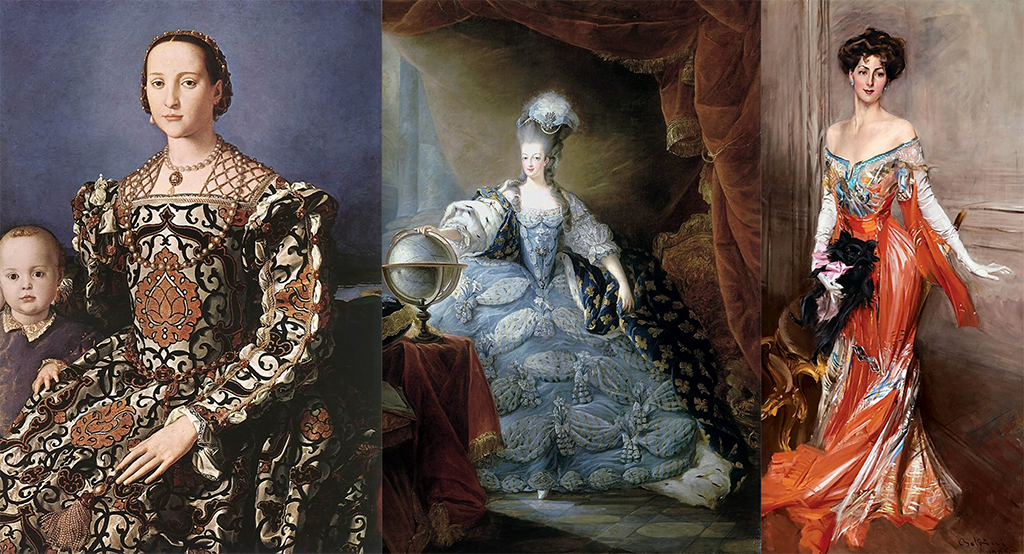Fashion, that shifting symphony of styles and trends woven into the fabric of our society, is more than just clothing. It is an expression of art, a reflection of cultural and personal identity that has spanned the centuries, shaping and molded by social, economic and cultural changes. This article aims to explore the fashion movement from its inception to the present day, analyzing how it has evolved and why it remains a central element of our existence.
Origins of Fashion
The roots of fashion go back to the arenas of ancient history, where early civilizations used clothing not only for protection but also as a symbol of status, power and belonging. The Egyptians, for example, were known for their finely crafted linens, a symbol of purity and social status, while the Greeks celebrated the beauty of the human with draperies that enhanced the physical form.
In the Middle Ages, fashion began to reflect increasingly stratified social hierarchies, with nobles wearing luxurious fabrics such as silk and velvet to distinguish themselves from the lower classes, who relied on humbler materials. This era also saw the introduction of somptuary laws, designed to restrict the use of certain fabrics and styles to specific social classes, marking one of the earliest examples of fashion being used as a tool of social control.
Industrial Revolution and Fashion
The Industrial Revolution marked a crucial turning point for the fashion world. The introduction of mechanized production and new technologies such as the sewing machine radically transformed the way clothes were produced and consumed. Ready-to-wear emerged as an alternative to made-to-measure fashion, making clothes more accessible to a wider audience and marking the beginning of fashion as we know it today.
The Fashion Boom in the 20th Century
The 20th century witnessed an explosion of creativity and innovation in fashion. Paris established itself as the beating heart of haute couture, with designers such as Coco Chanel and Christian Dior redefining standards of beauty and elegance. This era also saw the emergence of new fashion movements, from the boldness of punk to the sophistication of minimalism, each expressing the anxieties and aspirations of its generation.
The influence of the media and celebrities became increasingly predominant, with figures such as Audrey Hepburn and Marilyn Monroe defining the style ideals of an entire era. Television, and later the Internet, allowed fashion to reach a global audience, expanding its impact far beyond the catwalks.
Fashion in the 21st Century
The 21st century has seen fashion embrace digitization, with online retail and virtual fashion shows opening new frontiers of accessibility and innovation. However, it is also the era that has seen the growing importance of sustainability and ethics, with consumers increasingly aware of the environmental and social impact of fashion production.
Contemporary fashion is characterized by a continuous search for balance between technological innovation, sustainability and inclusiveness, seeking to respond to the challenges of our time while remaining a vehicle for personal and cultural expression.
The Future of Fashion
Looking ahead, technological innovation promises to further revolutionize the fashion industry. 3D printing, smart textiles capable of changing color or texture on command, and artificial intelligence that personalizes the shopping experience are just some of the frontiers we are beginning to explore.
However, beyond technological innovations, the future of fashion will be defined by its ability to serve as a tool for social and cultural inclusion, celebrating diversity and promoting an ethos of sustainability and responsibility.
Conclusion
Fashion, over the centuries, has shown an extraordinary ability to adapt and innovate, reflecting and influencing changes in society. From the symbolic status of the ancient Egyptians to the digital revolutions of the 21st century, fashion has continued to evolve, always maintaining its central role as a form of personal and cultural expression. As we look to the future, it is clear that fashion will continue to be a dynamic and influential element of our culture, prompting us to reflect on who we are and how we want to present ourselves to the world.



